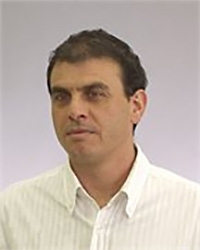Managed Aquifer Recharge with Desalinated Seawater: Focus on the Hadera-Menashe-Infiltration-System, Israel
Presenter
Dr. Daniel Kurtzman
Research Scientist, Hydrologist
Abstract
Due to increase in demand for potable-water and ability of the public to pay more for them, Israel built (2005-2015) 5 large desalination plants on the Mediterranean coast with a total production capacity of 600*106 m3/yr (480*109 acre-feet/yr). These desalination plants are very large point-sources to the Israeli National Water Carrier (e.g. Hadera Plant ~ 15,000 m3/hr), hence, short durations of inability to supply (all or some of) these expensive water (hours- days -few weeks) require a storage solution for few million cubic meters. Surface reservoirs of these volumes are expensive to construct and consume precious land, hence we do Managed Aquifer Recharge (MAR) of desalinated seawater. Groups from ARO, BGU and Mekorot joined in an international European Community Consortium – MARSOL (and following research) to investigate the following 3 aspects of this MAR operation in a research based on the operational MAR system of Hadera-Menashe.
- Infiltration-recharge dynamics and modeling – unlike most MAR operations, which use water of low-quality and surface-clogging is a major control on infiltration dynamics – here we show the sediment profile of the unsaturated zone (20-30 m) controls these dynamics, and suggest simple and more sophisticated ways to model and come out with recharge fluxes to feed a regional groundwater modeling.
- Regional aquifer response to MAR of desalinated seawater – A groundwater flow and conservative-transport model of the area, which is fed by the aforementioned recharge fluxes (as well as natural recharge elsewhere), was calibrated/validated with data of operational MAR events (2015/2016). Analysis of 2H and 18O which are very clear markers of reverse-osmosis desalinated-seawater agree with the flow and transport model showing a slight effect of these MAR water (~5% in mix) in the closest deep wells 500 m down-gradient.
- Major-ion geochemistry related to MAR of desalinated seawater – Laboratory (columns of the Menashe sediments) and field-research reveal that the significant change in major ion chemistry of the infiltrating water is the increase in Mg from practically 0 in the desalinated water to 2-5 mg/l in the deep unsaturated zone-shallow groundwater after fast enrichment from the sediment due to cation-exchange. CaCO3 dissolution during infiltration is minor. For the first (and fast) part of the MAR process, from land surface to water-table, a reactive-transport model was calibrated. Simulations of the development of Mg and Ca in water and sediment for 50 yr: 1) with MAR of the current desalinated water (enriched with CaCO3 at the desalination plant); and 2) MAR of desalinated seawater that haven’t gone this post-treatment (and tend to dissolute CaCO3 from sediment), show the process is sustainable. Geochemical process of the longer part of MAR in the aquifer towards the perforation of the production wells (~KM laterally,~ 50 m vertically, ~years), is a major future research challenge.
